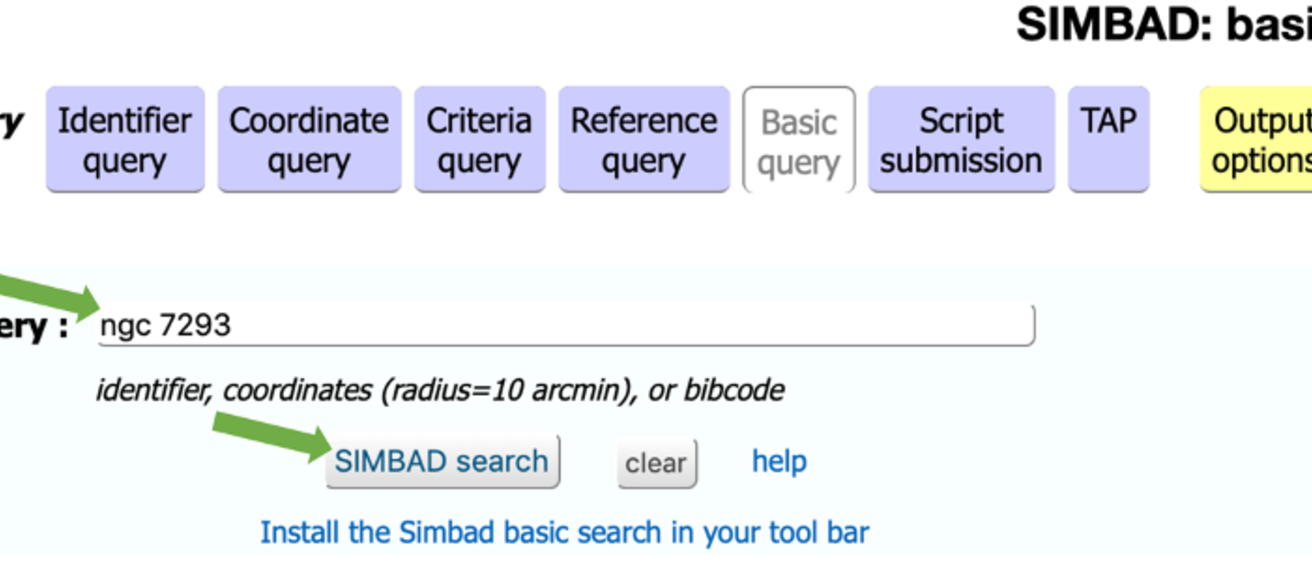
Breadcrumb
- Home
- Labs
- Advanced Labs
- SIMBAD Astronomical Database
- Part 1: Classes of Objects to Explore
Part 1: Classes of Objects to Explore
Students should decide which class of object they would be most interested in studying, and select an example from that class to investigate. Students should feel free to investigate more than one class of object, or more than one example from a class.
This exercise will probably work best if students choose “Deep Sky Objects” as amateur astronomers call them. That is, star clusters, nebulae, or galaxies rather than stars. The reason for this is that on the survey images, most stars look like saturated points.
The following table contains example Deep Sky Objects grouped into different classes. You don’t have to choose your object(s) from this table, but it is suggested. A lot of the names are objects from the Messier catalog. For example, the first object in the table, M42, is Messier 42, the famous Orion Nebula. Objects with NGC numbers, like NGC 4244 (“The Silver Needle Galaxy”), the last object in the table, are objects from the New General Catalog, again of non-stellar objects.
List of Deep Sky, Non-Stellar Objects
| Classes of Objects | Example Individual Objects |
|---|---|
| HII Regions | M42, NGC 2237, IC 1805, IC 1396, M17, NGC 2264 |
| Open Star Clusters | M67, M44, M35, M36, M37 |
| Globular Star Clusters | M13 (The Great Globular Cluster in Hercules), M92, M3, M5, M10 |
| Planetary Nebulae | NGC 6543 (The Cat’s Eye Nebula), NGC6826 (The Blinking Nebula), NGC 6781 |
| Galaxies | M65, M66, NGC 3184, NGC 4151, M31, M109, NGC 4111, NGC 4244 |